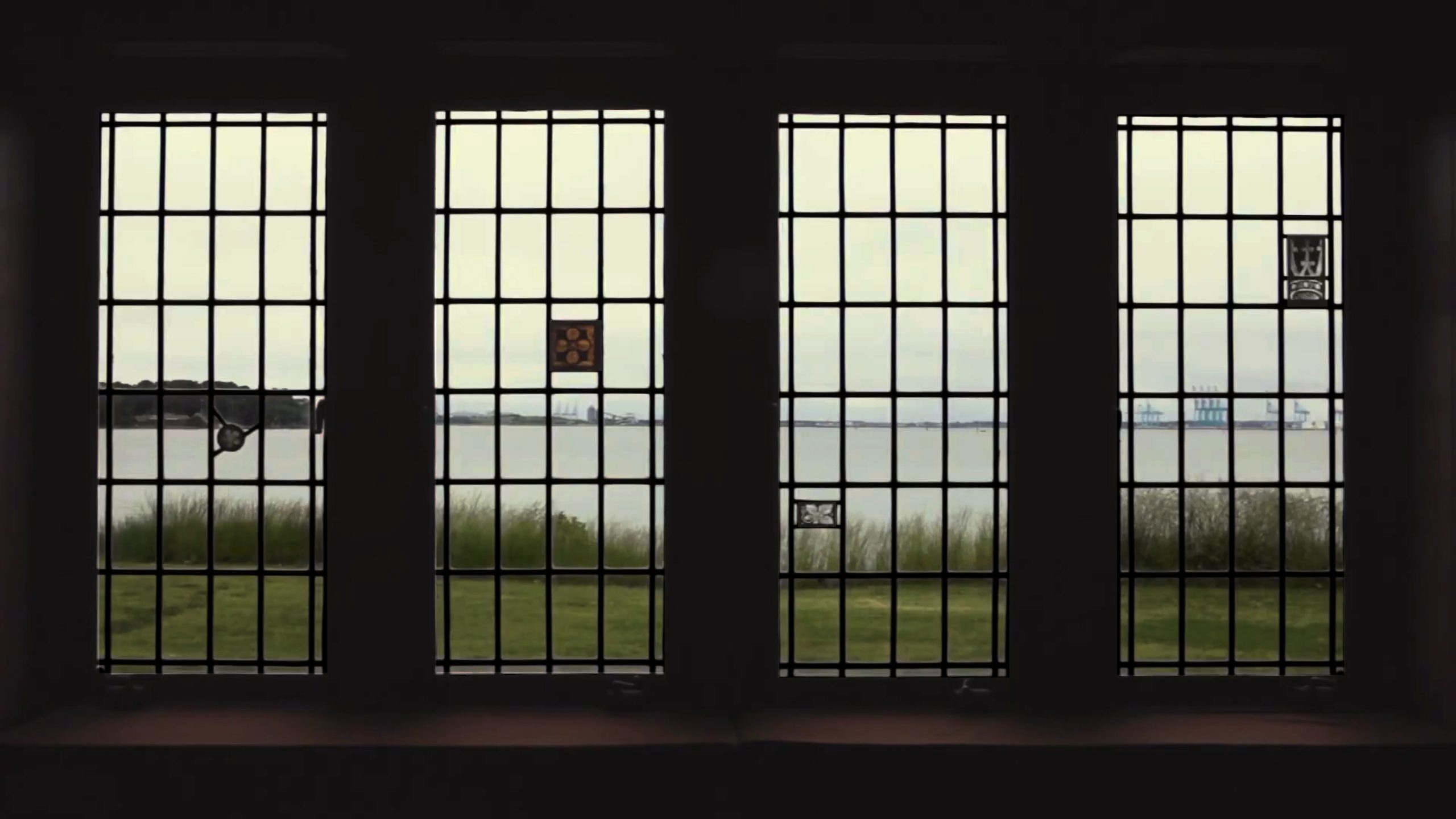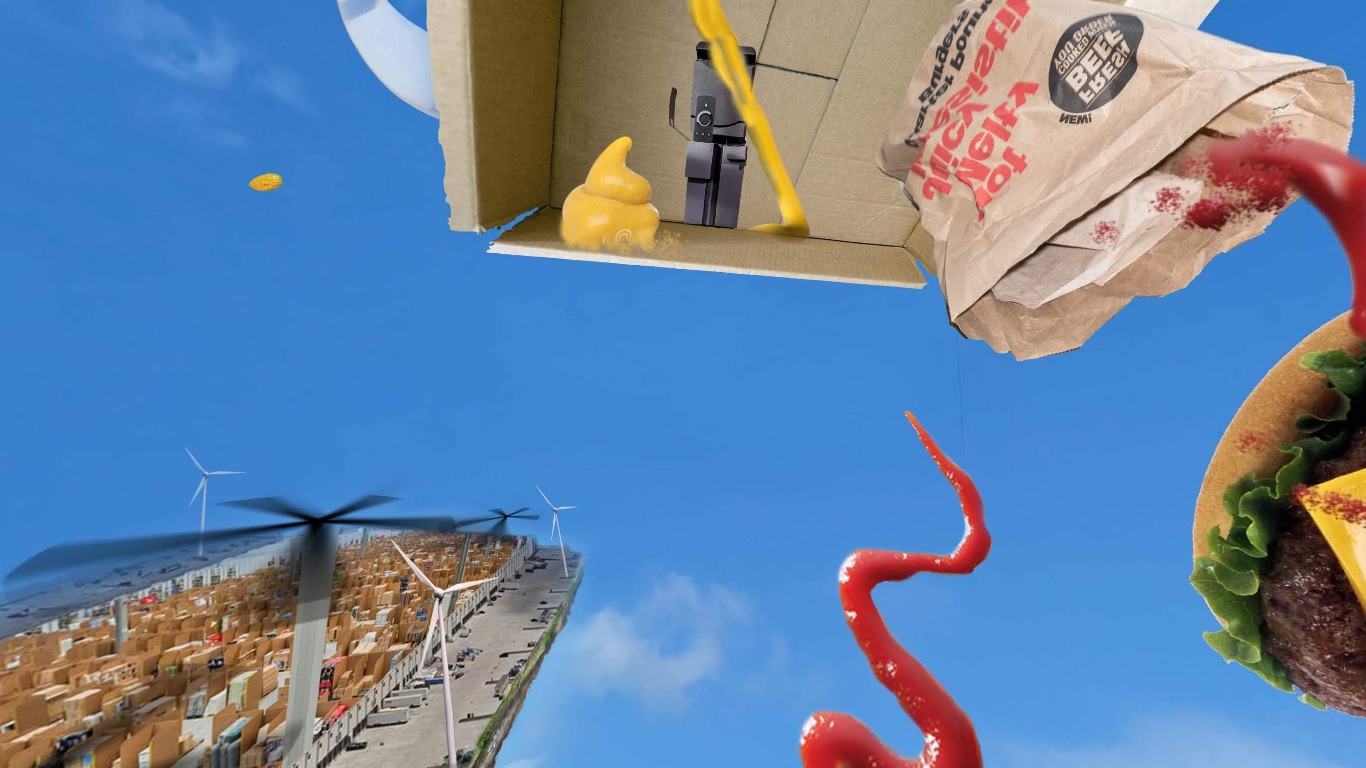Forest Kelley’s Virtual Worker Diaries (2022) offers a sobering view on “micro-labor,” and the inherent physical and emotional distancing that characterizes a digital workforce. The video tells seven unique personal stories with issues ranging from relationship struggles, substance abuse, financial distress, and failing health. Story after story piles up, weighing on the audience as the often disturbing tales continue. Kelley’s use of deeply personal stories creates a tense, fascinating contrast between the personal and the anonymous. To add a strange third dimension to that, Kelley has no way of knowing if the stories being told are true. Sourced through an extremely deliberate process that prioritizes anonymity, the stories could technically be entirely fabricated despite sounding realistic.
Each story is delivered in an eerily impersonal manner due to its unique visual style and pacing. This effectively emphasizes feelings of anonymity and impersonality throughout the video, yet also can heighten the relatability of the content. Left with nothing but intentionally nondescript humanoid figures, the viewer instead must reflect the content of the story in a more abstract way. Kelley’s distinct human figures are built to simply represent the idea of a human without any identifiers––hair, skin color, facial features, clothing, expression. Interestingly, this works effectively to make the stories even more impactful by forcing the viewer to contextualize and interpret the stories within their own life. Had Kelley simply presented identifiable people sharing personal stories, it would be easier to dissociate from their distress simply because they are a stranger. Kelley does not afford viewers the luxury of dissociation, instead only indicating that the story is human and that should be enough for the audience to care.
Kelley deliberately avoided personal identification throughout his process. Kelley sourced the stories anonymously through various websites, had different actors read them out loud, and different face models for the forensic face composites. Thus, Kelley is presenting a strange composite of many different workers’ contributions, with no one story being exclusive to one worker. This creates a fascinating contrast as the stories themselves are incredibly personal, yet they are delivered via avatars—any person of digital manipulation.
Kelley defines micro labor as “small, discrete tasks that can be performed by workers with internet access, usually for proportionally small sums of money”. Using websites that sell cheap online labor, Kelley uses a system of identification numbers and minimal communication to maximize the anonymity between “employee” and employer. Kelley notes in his artist statement that increased digitization has resulted in a greater chasm between employer and employee in terms of personal relations. Kelley’s work spotlights this effect brilliantly, offering personal stories in the most impersonal way possible.
Each story describes deeply personal aspects of life, many requiring a high degree of vulnerability and bravery to even admit. Thus, it garners a large amount of sympathy from the audience as they hear about such hardship. However, as each story ends and the lifeless CGI face slowly fades off the screen the viewer is sharply reminded yet again of their separation from the story. The slow fade also highlights how easy it could be to simply forget about these stories. The third story of the video offers itself an excellent example of this concept, telling the story of a woman with an autistic husband. Married for sixteen years to a man with autism, the woman describes the immense emotional toll her husband has taken on her life. Making matters worse, she entirely lacks support systems, her friends don’t understand her problems and she couldn’t meet the time commitment of joining a church. Thus, the woman has been effectively exiled from society and pushed out of the spotlight because her situation is not relatable. “Dirty Jobs: Essential Jobs and the Hidden Toll of Inequality in America,” tells the stories of workers who are personally morally repulsed by the jobs they have. The book highlights jobs such as a missile drone operator, slaughterhouse employee, or prison guard. All of those jobs could arguably be considered “essential” to the well-being of America, yet they are rarely discussed due to their moral shortcomings. Therefore, the trauma of a drone operator who has killed families is pushed to the periphery of society and silenced simply because people don’t want to acknowledge the existence of such a job. While it is easy to ignore such jobs, or even listen for a moment about their stories and forget, Forest Kelley urges his audience to think deeper and consider the person behind each job, at each computer.
:::

Ryan Keep is a junior at the University of Richmond majoring in English with a minor in Visual Arts. He enjoys photography and creating sports-focused art in Adobe Photoshop.



